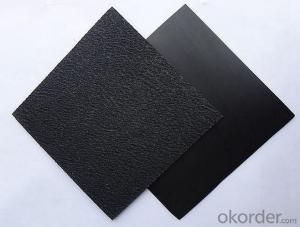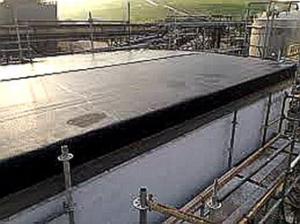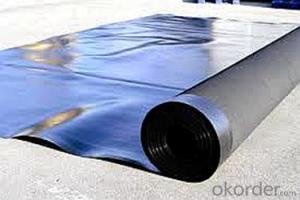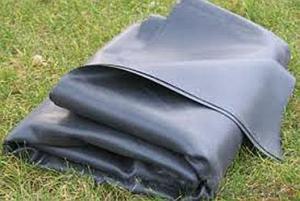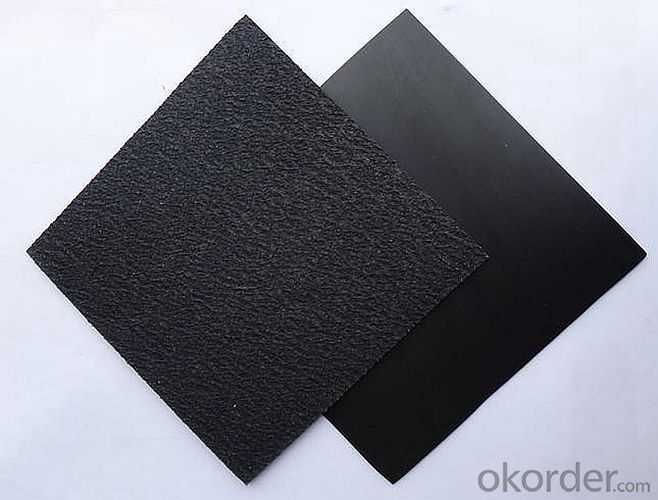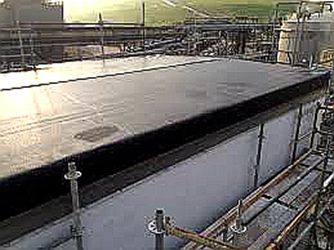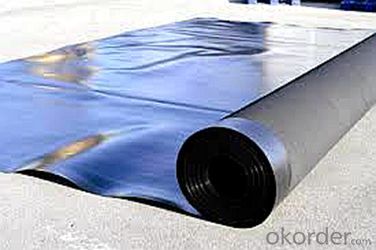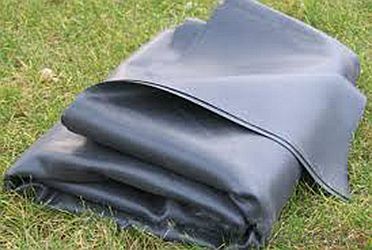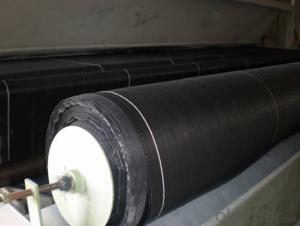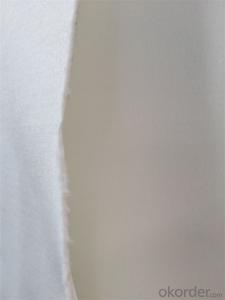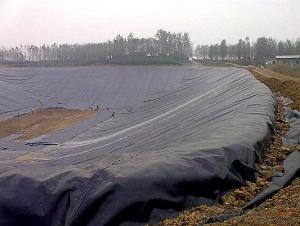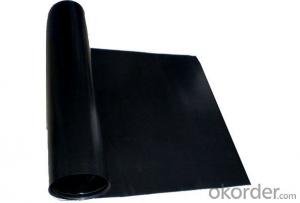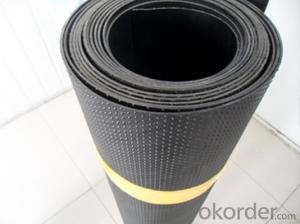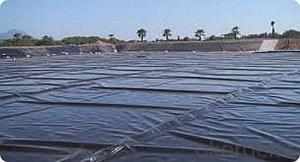High Quality Geomembrane with Geotextile Under Gravel for Hazardous Waste Liquid
- Loading Port:
- China main port
- Payment Terms:
- TT OR LC
- Min Order Qty:
- 1000 m²
- Supply Capability:
- 1000000 m²/month
OKorder Service Pledge
OKorder Financial Service
You Might Also Like
Specification

HDPE Geomembrane is mainly made of high density polyethylene and little carbon black, also with some antioxidant, UV absorbent, stabilizer and so on.
Feature:
1. Corrosion resistance, aging resistance, puncture resistance
2. Repairable and recyclable
3. Very low permeability
4. Good flexibility
5. Excellent environmental stress cracking resistance property
6. High tensile strength and elongation
7. For service temperature range : -70℃ ~ +110℃
1. Product Introduction
Thickness
1mm-3.0mm
width
4-9m
Length
50-100m or as customers' requests
Material
LDPE, LLDPE, HDPE, EVA, ECB, PVC , CPE
Our Service
Quality assurance
1.On a regular basis or as per your request,we entrust national testing agencies to conduct quality inspections
2. Strictly in accordance with the ISO9001-2008 international quality system standard,we monitor and manage the whole process throughout production,quality testing,and measurement to ensure product quality
3. For quality-related construction delay or substandard construction(except for damage or losses due to customer’s responsibility or irresistible natural disasters),we have refunding,replacement,and repair services.We will respond to customers’ feedbacks on quality issues within 24 hours.
Packaging & Shipping
Packing: PLASTIC FILM INSIDE, AND WOVEN BAG OUTSIDE
Shipping: About 15 days after receipt the deposit
FAQ:
Q: What kind of payments does jenor support?
A: T/T, L/C, Cash are accepted.
Q: Do you charge for the samples?
A: Accordeing to our company policy, the samples are free, we only charge the freight fee. And we will return the freight fee during the next order.
Q: Can you produce according to customers' design?
A: Sure, we are professional manufacturer, OEM and ODM are both welcome.
Q: Do you have other products?
A: Yes, please check the pictures:
- Q: Can geotextiles be used in the construction of reservoirs?
- Yes, geotextiles can be used in the construction of reservoirs. Geotextiles are commonly used as a filtration and separation layer in the construction of dams and reservoirs. They help to prevent soil erosion, provide stability, and enhance the overall durability of the reservoir structure.
- Q: How to build a good geotextile sales team
- Any industry needs talent, geotextile sales staff do not need a high degree of education, can work hard on the line, I am specializing in the production of geotechnical materials, wish smooth
- Q: What are the different geotextile installation techniques in slope stabilization?
- Some of the different geotextile installation techniques in slope stabilization include anchoring the geotextile with nails or staples, using mechanical devices such as geocells or geogrids to secure the geotextile, and using slope erosion control blankets or mats to hold the geotextile in place. Additionally, geotextiles can be installed in layers or wrapped around soil layers to provide increased stability and reinforcement.
- Q: Can geotextiles be used in shoreline protection?
- Yes, geotextiles can be used in shoreline protection. Geotextiles are permeable fabrics that can be placed along shorelines to control erosion and stabilize the soil. They act as a barrier that prevents the loss of sediment while allowing water to pass through. This helps to protect the shoreline from wave action and reduce overall erosion.
- Q: Can geotextiles be used in wastewater treatment systems?
- Yes, geotextiles can be used in wastewater treatment systems. Geotextiles are commonly used for filtration, separation, and drainage purposes in various engineering applications, including wastewater treatment. They can be used as a barrier to prevent fine particles from clogging drainage systems, as a filter to remove solid contaminants from wastewater, and as a reinforcement material in the construction of wastewater treatment structures.
- Q: How do geotextiles help with soil stabilization?
- Geotextiles help with soil stabilization by acting as a barrier between the soil and other materials, such as water or aggregates. They prevent soil erosion, promote drainage, and enhance soil strength, ultimately improving stability and preventing the loss of soil particles.
- Q: Geotextile with glue can stick cement wall
- There is a special geomembrane ks glue, I am specializing in the production of geotechnical materials
- Q: Can geotextiles be used in dam construction?
- Yes, geotextiles can be used in dam construction. Geotextiles are commonly used in dams as they provide reinforcement, filtration, and drainage functions. They help in stabilizing the soil, preventing erosion, and improving the overall strength and performance of the dam structure.
- Q: What are the challenges associated with the installation of geotextiles?
- Some challenges associated with the installation of geotextiles include the need for proper site preparation, ensuring correct placement and alignment, managing wrinkles and folds, securing the geotextile in place, and addressing potential issues with soil erosion or infiltration. Additionally, selecting the right type and quality of geotextile for the specific application is crucial for ensuring its effectiveness and longevity.
- Q: Pvc tube outsourcing geotextile, how to count how much geotextile
- Calculate the circumference of the bottom of the pipe by the diameter of the pipe, and the length of the pipe is multiplied by the length of the pipe, which is the area of the geotextile. Huazhi geotechnical materials manufacturers to answer your questions
Send your message to us
High Quality Geomembrane with Geotextile Under Gravel for Hazardous Waste Liquid
- Loading Port:
- China main port
- Payment Terms:
- TT OR LC
- Min Order Qty:
- 1000 m²
- Supply Capability:
- 1000000 m²/month
OKorder Service Pledge
OKorder Financial Service
Similar products
Hot products
Hot Searches
Related keywords
